Church Of MO – 2001 Cagiva Raptor

While Ducati might get much of the glory for being the Italian brand with a mega naked-bike presence, one must not forget Cagiva. It’s easy to do, Cagiva being an obscure brand and all, but what it showed in the Raptor was a bike that was so close to hitting the mark. It was a looker, had the right components to make it a handler, and borrowed the Suzuki TL1000 V-Twin engine. Late in the year 2000, contributor Glenn Le Santo threw a leg over one, and now, 14 years later, we revisit it for this week’s Church of MO feature.
2001 Cagiva Raptor
Dank Cyber-Bistro, August 11, 2000
There was a time when the Japanese could make a powerful and reliable engine but struggled to build a good handling chassis to compliment it. In those days only the Italians or the British could make a bike that handled properly. However, they found it almost impossible to make an engine that could match the best coming from Japan. Today, only a complete bigot would claim that the Japanese haven’t got the handling game down to a pretty fine art. So where does that leave the Europeans? According to the Italians it leaves them taking care of style.
In some ways the Cagiva Raptors could be called the new Rickmans (these were superbikes built in the UK in the Seventies that used a trick frame, made from Reynolds tubing). These tasteful frames often housed a breathed-on Japanese motor pirated from a CB750 or a Z1. They worked because they matched proven engineering with an in-house ability to build a chassis that worked. There’s no doubt that Cagiva can build a working chassis, and the donor motor from Suzuki’s TL1000, is already well- known for power and reliability. Cagiva has arguably out TL’d the TL by adding some sensational Italian styling that works well on the eye. Actually, the styling was done by none other than Miguel Angel Galluzzi, an Argentinean. If the name seems familiar its because he’s the same bloke that penned Ducati’s original Monster and then persuaded management to build it. We all know the Monster story; good on the eye, good for the soul and good on the street. So, how does the Cagiva recipe work on the road?
The 90 degree V-Twin, liquid-cooled engine was an inspired choice since Cagiva wanted to out-do Ducati, the company they had recently sold. Cagiva needed an engine that would square up to Ducati’s brilliant eight-valve liquid-cooled Vee which they knew would be in the Monster chassis before too long. The Suzuki engine is a perfect choice. The motor is narrow like a Ducati and also powerful like a Ducati. Cagiva was hoping that the Japanese heritage would add reliability, a point that is sometimes questioned with the Ducati option. The 98 x 66mm 996cc and 105 horsepower engine certainly delivers the poke you’d expect from a big V-twin and it seems to be reliable enough, at least when fitted in the Suzuki TL range. Get the needle up to around 4,000 rpm on that wacky triangular analog tach and the engine is ready to rip up the pavement. Suzuki claimed 120bhp from the same motor, so where’s the missing 15bhp? The answer lies in the method of measurement, with Suzuki running the Dyno off the crank and Cagiva taking a reading at the rear tire, where it matters.
The gearbox — a six-speeder — was generally well-behaved during our test although there was the occasional missed shift from first to second when the engine was cold. The cable-operated clutch was light and progressive but it bit very late on our test model. I like it this way since it means that just a small dip of the clutch lever is all that’s required when changing down. Other than that, the clutch behaved perfectly with no screeching, rattling or grabbing — very un-Ducati-like. You also couldn’t fault the digital fuel injection. At any speed, even trickling through traffic , the motor was properly fed its fuel with no hunting, surging or hiccupping; just perfect metering and no amount of heavy handedness with the throttle grip could fool the mapping. Brilliant!
Unfortunately, the comfort runs out before the fun does. I found the sloping forward saddle a real pain in the nuts, my first experience on the bike being a painful meeting with the petrol tank when I first applied the brakes. I found myself sitting well forward, motocross style, in the saddle. This aided control in the twisties but did nothing for the safety of my vital organs. This upright and forward stance also meant that most of my contact with the bike was via the saddle; there’s very little weight on the bars or the slightly rearward mounted footpegs. This soon led to discomfort, about fifty miles into any ride my butt would start to snooze. Fortunetly, when given loads of stick, the petrol tank would be demanding more fuel via the flashing warning light on the funky console after as little as sixty-five miles! Use the throttle a bit less and the 18 liter (4.7 gal) tank lasts much longer.
At high speed (this bike will do 145MPH flat out) you’re going to have trouble holding on. Without even the bikini fairing fitted to the V-Raptor there is a load of wind force at speed trying to remove your head and helmet as one unit. At speeds above 125MPH the front end doesn’t feel as planted as you might desire at such velocity. This is a backroad blaster; a real roadster, not a hyper sportbike, so such considerations like ultra high speed handling are academic. If I owned one I’d be tempted to re-valve those forks and maybe fit a steering damper. If you don’t ride it on the edge, you will not be troubled by any of this.
For me, the proof of any bike is how I feel when the time comes to surrender the test machine. On the morning I was due to return the Cagiva, I felt blue. I really didn’t want to hand the keys back. I found every excuse I could to delay the return by a few more hours and I spent them all riding the bike. With too little luggage room and not enough comfort, it’s not a great bike for touring. A well-ridden sportbike will trounce it on both handling and absolute speed. But point it down some twisty back roads and it’ll return you to home with a huge smile and a burning desire to go back for more. Roll it slowly through your neighborhood and it’ll turn heads. The styling may not be everyone’s cup of high-octane fuel but it does it for me and it gets loads of attention when parked.
Verdict? A good combination of Japanese engineering and Italian flair. A good choice if you want a roadster that shouts, “I’m different!”
Specs
Engine: Liquid-cooled 90° 4-stroke V-TwinValves: 4 per cylinder, DOHCCapacity: 996ccBore x Stroke 98 x 66 mmComp ratio: 11.3:1Intake system: Digital fuel-injectionClutch: Wet multiplateTransmission: 6speed, chain final driveFt Suspension: 43 mm inverted Marzocchi, 120 mm travelRr suspension: Sachs damper, preload adjustableFront brakes: 2 x four piston Brembo calipers, 2 x 298 mm discsRear brakes: twin piston Brembo caliper, 220 mm discFront wheel: 3.50 x 17 cast aluminumRear wheel: 5.50 x 17 cast aluminumFront tire: 120/70 x 17 Bridgestone BT56Rear tire: 180/55 x 17 Bridgestone BT56Rake/Trail: 25.2°/110 mm Wheelbase: 1440 mm (56.7 inches)Seat Height: 770 mm (30.3 inches)Fuel capacity: 18 liters (4.7 gallons)Dry Weight: 192 kg (423 lbs)Instruments: Digital speedometer and scrollable digital readout for coolant temp, odometer, trip mileage (x 2). Tachometer, warning lights for neutral, high beam, turn signals and low fuel.

Troy's been riding motorcycles and writing about them since 2006, getting his start at Rider Magazine. From there, he moved to Sport Rider Magazine before finally landing at Motorcycle.com in 2011. A lifelong gearhead who didn't fully immerse himself in motorcycles until his teenage years, Troy's interests have always been in technology, performance, and going fast. Naturally, racing was the perfect avenue to combine all three. Troy has been racing nearly as long as he's been riding and has competed at the AMA national level. He's also won multiple club races throughout the country, culminating in a Utah Sport Bike Association championship in 2011. He has been invited as a guest instructor for the Yamaha Champions Riding School, and when he's not out riding, he's either wrenching on bikes or watching MotoGP.
More by Troy Siahaan




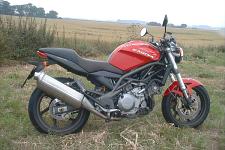















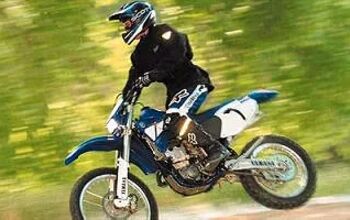
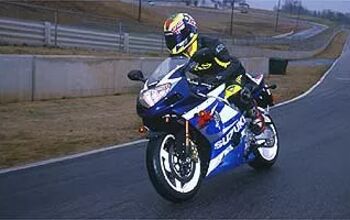
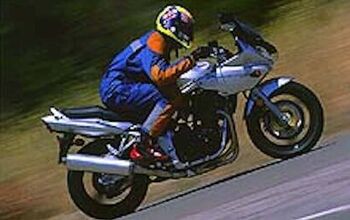
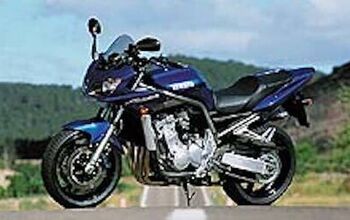



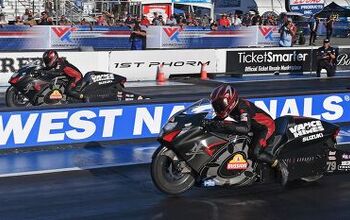






Comments
Join the conversation
This baby could give a run for its money to ANY current naked bike,and you can buy a low miles, used one for about $5000 ... in the UK
I always thought these bikes were pretty sweet. They just look so "normal" that it's hard not to like them.